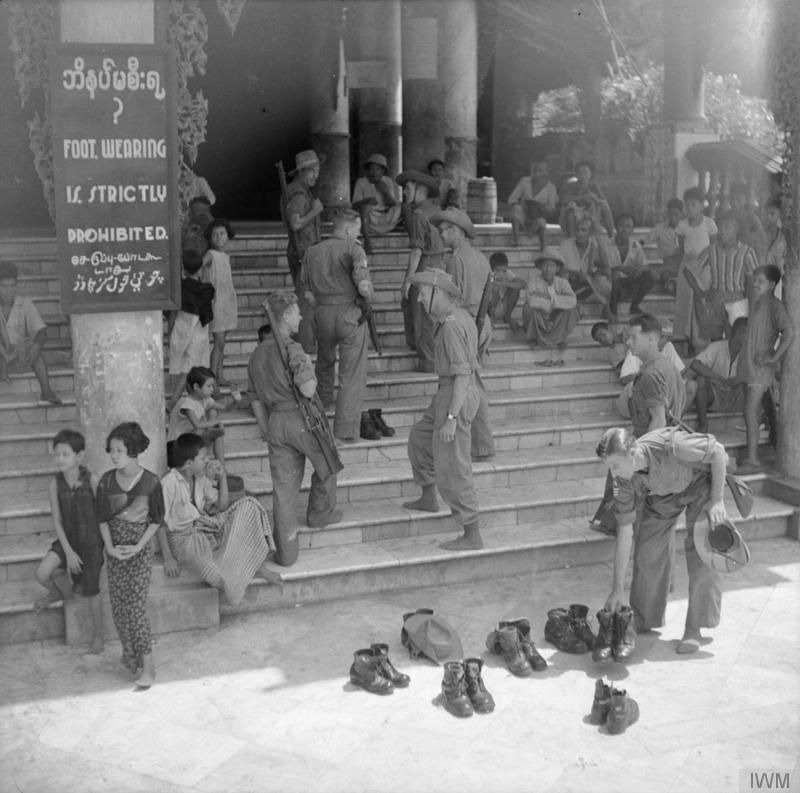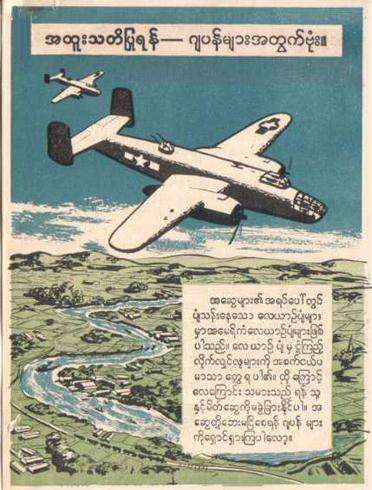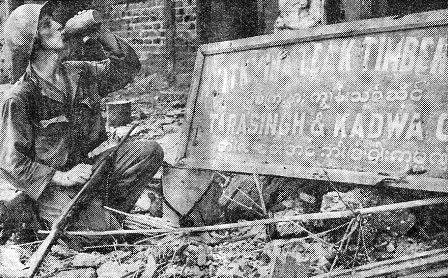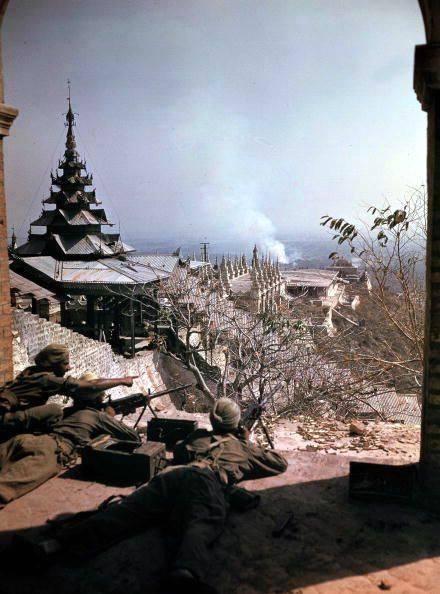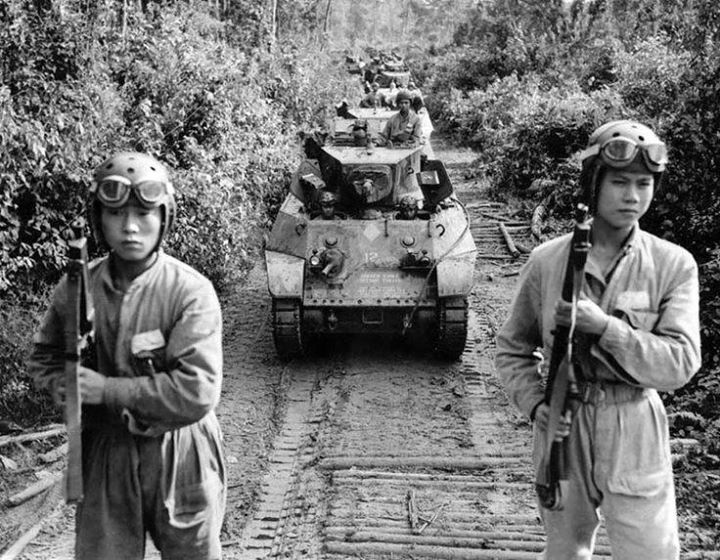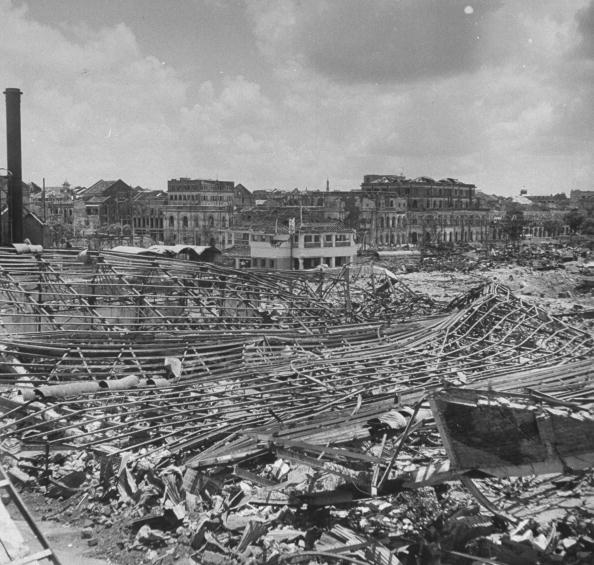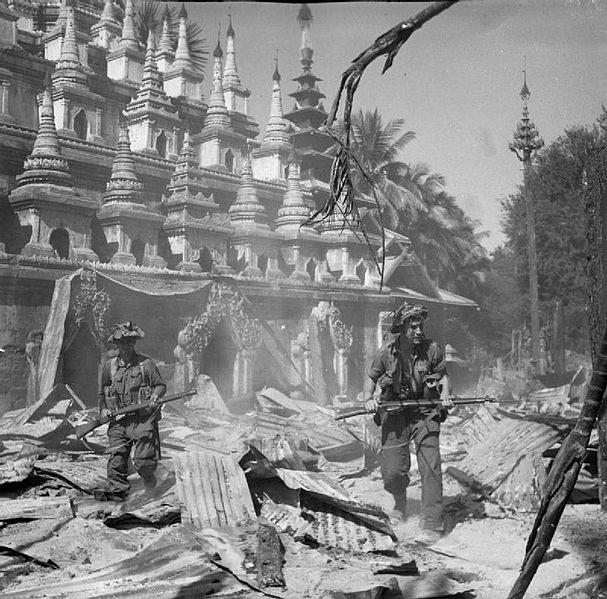World War Two (1942-1945)
Burma was the site of some of the most important land battles of World War Two. It was also the setting for some of the most humiliating defeats the British would face during the war – it would take the combined powers of the Allied forces and the might of multiple armies to win Burma back from the Japanese.
While the Allied forces were ultimately victorious in Burma, the country was left in ruins. The political progress of the preceding years – the attempts at constitutional reform and the path to self-governance that had been established – was in tatters and would be replaced by a militant nationalism that has dominated the country to the present day.
The essays, stories, photographs, and battle plans included in this section explore the intersections between the global war, the military history of Burma during that time, and the local politics that emerged from the wreckage.
Historic Events
Dr. Ba Maw in Tokyo in 1943
In March 1943, Dr Ba Maw travelled to Tokyo (together with Thakin May, U Thein Maung, and General Aung San) for discussions with Japanese Prime Minister Hideki Tojo and others. Five months later, Dr Ba Maw would be proclaimed the adhipati (Leader) of the State of Burma and an ally of the Axis Powers. The Burmese delegation's arrival at Haneda airport in Tokyo was featured on this cover of the Japanese magazine, Shashin Shuho. In the background of both photographs...
Read MoreStay away from the Japanese!
An American air force leaflets from 1943 explaining to Burmese villagers that the Allied bombs falling on their country are not meant for them but for the Japanese. The text reads, “The airplanes flying in your region are American planes. Looking down from the planes, people on the ground only look like little dots so soldiers in the planes can not tell friend from foe. In order to stay safe [and avoid being targeted], keep your distance from Japanese troops."
Read MoreHistoric Siege of Myitkyina
Beginning 17 May 1944, Chinese and American forces (including "Merrill's Marauders" ) supported by Kachin and other Allied troops laid siege to Japanese-held Myitkyina. It was a critical battle of World War Two, leading to the capture of the all-important Myitkyina airstrip. Myitkyina was captured after only 78 days of savage fighting against an entrenched Japanese garrison. Altogether nearly 10,000 men were killed or wounded during the historic siege. The Japanese had put up a fierce defence against almost impossible...
Read MoreSurrender of Japan
On 2 September 1945, the Empire of Japan formally surrendered to the Allied powers on board the USS Missouri. Over 100 Allied warships and submarines were present that day in Tokyo Bay. The Allied powers were represented by General Douglas MacArthur, Supreme Allied Commander. This photograph, from the Army Signal Corps Collection in the US National Archives shows the Japanese side, represented by Foreign Minister Shigemitsu Mamoru (front row, top hat) as civilian plenipotentiary and General Yoshijiro Umezu (standing next...
Read MoreThe Japanese surrender at Government House, Rangoon
On 12 September 1945, General Ichida Jiro, Acting Chief of Staff of Japan's Burma Area Army, formally surrendered to Brigadier E.F.E. Armstrong (Chief of Staff to Lieutenant-General Sir Montague Stopford, General Officer Commanding of the British Twelfth Army) at Government House, Rangoon. On the same day, Lord Louis Mountbatten, Supreme Allied Commander South East Asia received the Japanese surrender in Singapore. Five days earlier on 7 September, Lord Mountbatten and General Aung San had signed an agreement at Kandy in...
Read MoreThe 1945 Conquest of Burma
The Axis powers were then everywhere in retreat. British and American forces were crossing the Rhine, and Soviet armies - over two million strong - had taken Poland and were approaching Berlin from the east. In the Pacific, American Marines had defeated the Japanese at Iwo Jima and begun the firebombing of Tokyo. Fifteen months earlier, at the Cairo Conference in Egypt, the leaders of the new United Nations, Franklin D. Roosevelt, Winston Churchill, and Chiang Kai-shek, agreed on an...
Read MoreLedo or Stillwell Road
The "Ledo" or "Stillwell" Road was completed on 28 January 1945. The road linked Ledo in Assam with Kunming in Yunnan via the Kachin Hills. It was the first and is still the only modern road to connect India and China across Myanmar. The idea for the road began in 1942 after Japanese forces seized Rangoon and cut the old "Burma Road". The Burma Road began in Rangoon and went via Mandalay and Lashio to Yunnan. It was the critical...
Read MoreRetaking Myitkyina
The Allied 14th Indian Division began its (unsuccessful) attempt to seize the Mayu peninsula back from the Japanese in December 1942. At the same time, the British and Gurkha special forces (the "Chindits") were preparing for their first attempt to push deep behind Japanese lines in northern Burma ("Operation Longcloth"). The Japanese were then also battling the Chinese in Yunnan, whose 5th and 6th armies had tried in vain that year to hold the Shan states and, in 1943, would...
Read MoreAftermath of World War Two in Myanmar
Half a million American, British, Indian, Chinese, Japanese and other soldiers fought in Burma, during World War Two, leading to the devastation of almost every single city and town, every port, airport, train station, oil field and factory. Over 200,000 soldiers died, together with an unknown number of civilians. The war left behind an economy in ruins and a country awash in guns, leading directly to the civil wars that followed. In thinking of World War Two in Burma, the...
Read MorePyinmana during World War Two
On 20 April 1945, Allied forces led by the 5th Indian Division were seizing control of Pyinmana (now Naypyitaw). It was the headquarters of the Japanese 33rd Army and its commander, General Masaki Honda, only just managed to escape in the dark on foot. Hundreds of other Japanese were killed. The 5th Indian Division - with Scots, Pathan, Sikh, English, Gurkha, Punjabi and other troops - had fought the Italians in East Africa and the Germans in North Africa, as...
Read More